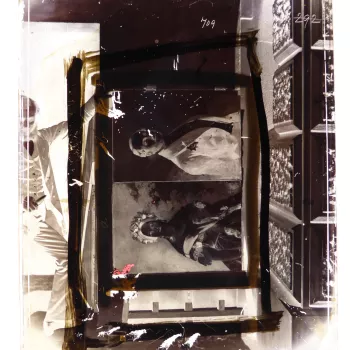Albert and Victoria’s collection of glass plate negatives show photographers’ working methods
Photographs of Objects and Works of Art
From the mid-1850s onwards, Queen Victoria and Prince Albert used photography to document their growing collections. To achieve this, the royal couple regularly commissioned photographers such as Dr Ernst Becker, Robert Howlett (1831-58) and William Bambridge (1810-79). Some of the resulting glass plate negatives serve as valuable records for the history of the Royal Collection, as they depict original works that are no longer in the collection, including a number of early daguerreotypes.
Additionally, a small number of negatives in this section shows pieces that were never part of the Royal Collection, and yet important to the royal couple. Highlights include works attributed to Raphael in the nineteenth century, which were key for the completion of Prince Albert’s Raphael Collection.









